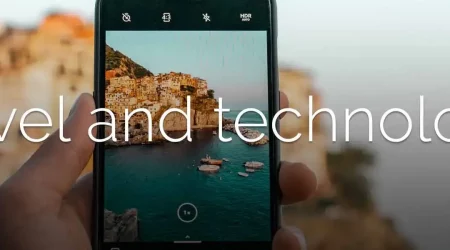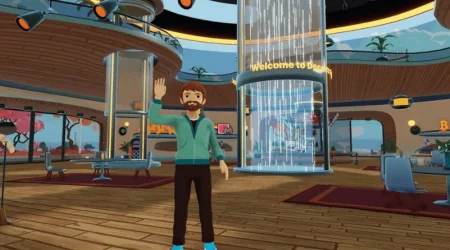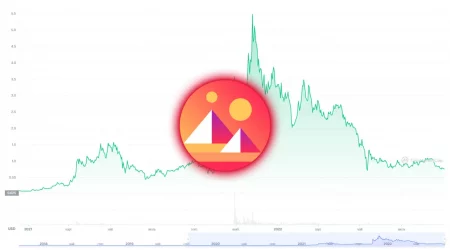Why Are NFTs Important for the Metaverse?
Table of Contents
Why Are NFTs Important for the Metaverse?
If blockchain technology is the future of the metaverse, then NFTs are its bedrock. Blockchain technology represents a critical cultural moment, but its applications remain unclear. It has been proposed that NFTs will help lower the entry barrier to play-to-win games, thereby promoting financial inclusion. However, many concerns remain, and predictions are often ill-defined and vague. NFTs provide the bedrock of financial transactions in a potential metaverse.
NFT market is an excellent place for game developers to attract new players. Rentable NFTs will enable users to test games before investing, thereby lowering entry barriers. Furthermore, these games will allow players to earn real money without spending real money. This means that they’ll be able to profit even from the game if they play it well and invest the money they have earned. The use of NFTs is not only for interoperability and economic benefits but also for the ability to sell virtual land for profit. NFTs also open up endless creative possibilities. Imagine being able to design virtual worlds with no limitations.
NFTs embody vital cultural moments.
Although NFT technology is still a relatively new concept, it has become mainstream thanks to visual arts. One of the first NFTs that caught the public’s attention was CryptoPunks, a collection of 10,000 unique 24×24 pixel art heads released accessible to the Ethereum community. This project inspired the technology used in ERC-721 tokens. In the following paragraphs, we will discuss why the concept of NFTs has become so popular.
Although it is unclear exactly how NFTs work, they may serve as access points for various benefits and events in the metaverse. And since NFTs represent the natural world in a virtual environment, the possibilities are endless. Brands should prepare for these changes and start imagining how they can best represent their products in the virtual environment. Here are some ways they can do so:
Creating a cohesive metaverse requires infrastructure. This infrastructure is needed to connect multiple blockchains. This includes centralized social media platforms, video game companies, and other entities. The infrastructure connects everything and makes it possible to transfer value instantly. It also allows for quick iterations on economic models and ensures actual ownership. The metaverse is evolving by the contributions of society.
They promote financial inclusion.
While the term “NFT” conjures images of a bitcoin ATM, in reality, NFTs are much more than that. They are digital assets that owners can use to participate in the Metaverse. As the Metaverse becomes increasingly open, it will enable more dynamic uses of the virtual assets. Here are some examples of how NFTs are already being utilized in the Metaverse. They can be used to buy virtual goods, display digital art, compete in virtual sporting competitions, and even become interactive structures.
Non-fungible tokens (NFTs) are digital ownership records stored on a blockchain. These assets will be able to be authenticated by a cryptographic key. These cryptographic keys cannot be lost or altered, making them an excellent means of decentralized verification. This will facilitate innovation and investment, as well as resource allocation. Ultimately, NFTs will promote financial inclusion in the metaverse.
NFTs are a gateway to the Metaverse. They can promote financial inclusion by enabling access to various digital goods. They also enable infinite creativity as an NFT can help individuals design and create their virtual goods. NFTs are a gateway to a metaverse that is otherwise a mystery to many. It will enable individuals to create truly unique experiences. If we take this idea one step further, NFTs will serve as the cornerstone of the future of social media.
Read More: What Are NFT’s Crypto?
Economic potential
Owning NFTs can unlock the metaverse’s economic potential as it opens up various new possibilities. Metaverses are a natural extension of real-world business, and, with proper governance and community, they are poised to be the next big thing. They will integrate AR, VR, social media, gaming, cryptocurrencies, and more and create a new economic era to see honest businesses expand into virtual spaces.
The economic potential of NFTs in the metaverse is now well-established, with prototype next-generation metaverses showing individuals settling the land, trading goods, and asserting ownership rights. However, a functional economy is necessary for any society to flourish. NFTs are integral to the metaverse’s economy, as they enable transactions based on authentication of digital properties and free travel.
Ability to create a virtual world
The ability of NFTs to create a virtual reality in the metaverse is a new type of blockchain technology that will allow members to own avatars, land, and digital apparel. This technology will also allow members to migrate from one platform to another. And, it will be easier to verify ownership compared to other technologies that require special access privileges. This innovation has many benefits for the future of the metaverse.
The ability of NFTs to create a virtual space in the metaverse is vital for the creator marketplace. It will allow virtual developers to reward their work with real money and encourage more users to participate in the metaverse economy. For instance, NFTs will encourage developers to create VR environments and sell items from their platforms. They will also enable virtual real estate developers to monetize these assets.
Future of virtual worlds
As we grow accustomed to virtual reality, it is natural to wonder how the metaverse can impact the future of our work. This new technology has been touted as the future of the corporate workplace. It can potentially replace the need for a traditional office building and reduce the need for a traditional workplace altogether. With the help of headsets and other immersive technologies, the metaverse can bring new benefits to our work, including the ability to collaborate with others without having to travel.
Currently, the metaverse can host hundreds of people in a single instance. However, future versions will be able to handle thousands, if not millions, of people at once. In addition, new technologies like motion-tracking can be used to distinguish where people are looking or touching. The new technologies will make our experiences in virtual worlds seem even more futuristic. Despite these advances, the metaverse will likely continue to grow in the coming years, and there’s no way to predict what it will look like in the next decade.






Leave a Reply